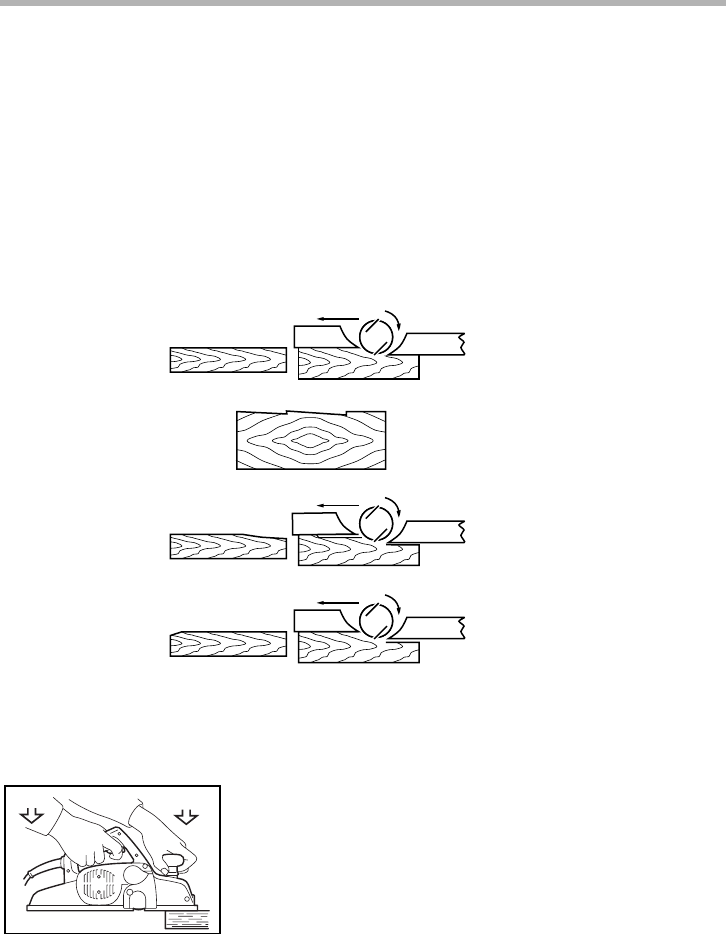
8
For the correct planer blade setting
Your planing surface will end up rough and uneven, unless
the blade is set properly and securely. The blade must be
mounted so that the cutting edge is absolutely level, that is,
parallel to the surface of the rear base.
Below are some examples of proper and improper settings.
OPERATION
Planing operation
First, rest the tool front base flat upon the workpiece surface
without the blades making any contact. Switch on and wait
until the blades attain full speed. Then move the tool gently
forward. Apply pressure on the front of tool at the start of
planing, and at the back at the end of planing. Planing will be
easier if you incline the workpiece in stationary fashion, so
that you can plane somewhat downhill.
The speed and depth of cut determine the kind of finish. The
power planer keeps cutting at a speed that will not result in
jamming by chips. For rough cutting, the depth of cut can be
increased, while for a good finish you should reduce the
depth of cut and advance the tool more slowly.
(A)
(B)
(B)
(A)
(B)
(A)
(A) Front base (Movable shoe)
(B) Rear base (Stationary shoe)
Correct setting
Nicks in surface
Gouging at start
Gouging at end
Although this side view cannot
show it, the edges of the blades
run perfectly parallel to the rear
base surface.
Cause: One or both blades fails to
have edge parallel to rear
base line.
Cause: One or both blade edges
fails to protrude enough in
relation to rear base line.
Cause: One or both blade edges
protrudes too far in relation
to rear base line.
EN0004-1
1. Start
2. End
21
001608


















